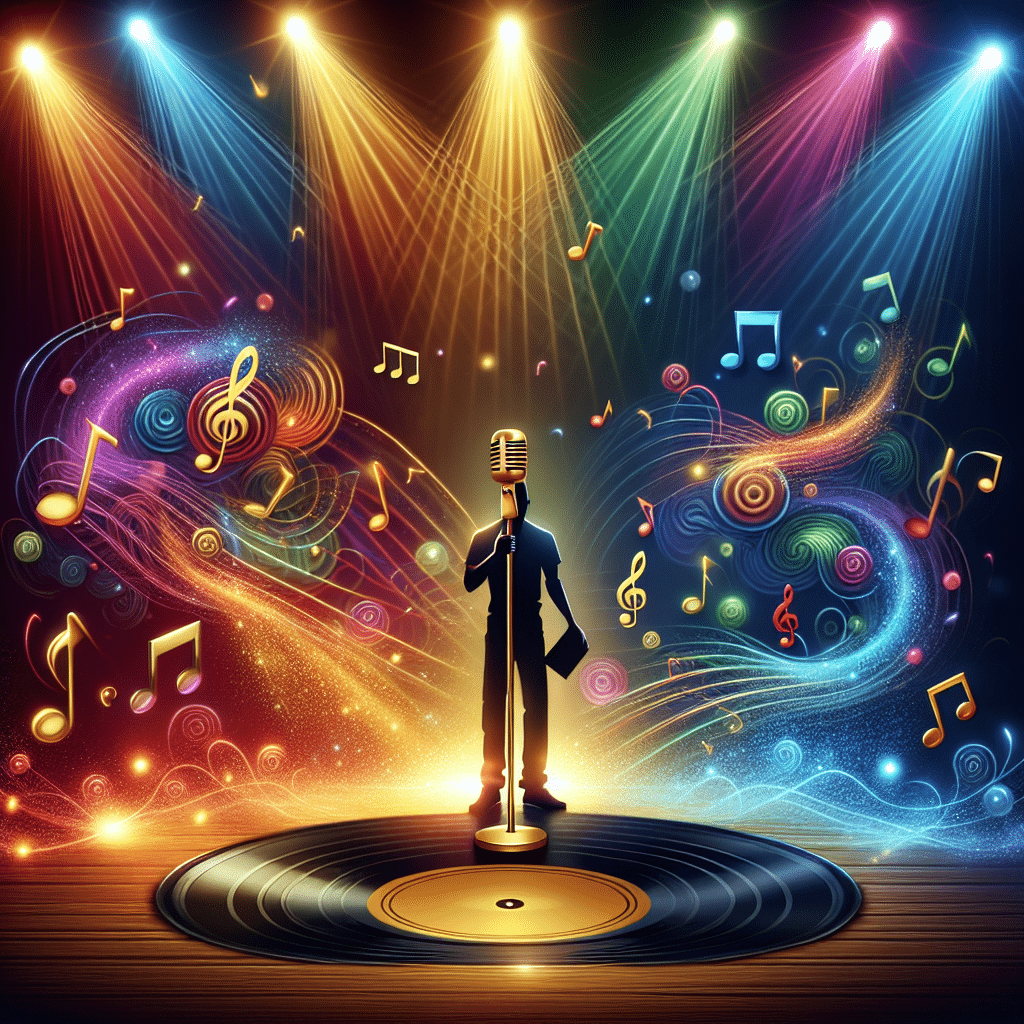R&B Icons: The Artists Behind the Classics That Changed the World

Introduction
Rhythm and Blues, or R&B, has evolved into one of the most influential genres in popular music. From its roots in the African American community through the mid-20th century to its modern renditions that continue to shape the musical landscape, R&B embodies a rich tapestry of emotions, stories, and cultural narratives. This article dives deep into the historical context of R&B, champions the key artists who have defined the genre, explores current trends, and examines the cultural impact of R&B icons throughout history.
Historical Context
The Birth of Rhythm and Blues
R&B's origins are traced back to the late 1940s and early 1950s, where it emerged from jazz, blues, and gospel music. This period marked a significant shift in the music industry, as artists began to merge various styles to create something uniquely American. Initially, R&B was a term used by the music industry to describe African American pop music, predominantly aimed at black audiences.
During this time, the music genres that preceded R&B laid the groundwork for its development. Artists like Ray Charles fused gospel and blues, setting the stage for mainstream acceptance of black music. By the 1960s, R&B began to evolve further, thanks to the influence of Motown and Stax Records, leading to the “soul” era where artists became political and socially conscious.
See Also: Broken Hearts and Healing Melodies: How R&B Love Songs Help Us Cope
Broken Hearts and Healing Melodies: How R&B Love Songs Help Us CopeCivil Rights Movement and R&B
The socio-political landscape of the 1960s and 70s played a crucial role in shaping R&B’s narrative. As the Civil Rights Movement gained momentum, R&B artists began using their music to address societal issues, echoing the clamoring voices for justice, equality, and change. The thoughtful, fervent lyrics of artists like Nina Simone and Marvin Gaye transformed R&B into a powerful tool for social commentary.
Key Artists
Ray Charles: A Pioneer of Soul
Often hailed as the 'Genius of Soul,' Ray Charles amalgamated various genres, fundamentally altering the musical landscape. His work laid a foundation for the soul genre and significantly impacted R&B's evolution. Hits like "What'd I Say" and "Georgia on My Mind" showcased his ability to blend gospel with jazz and blues, allowing R&B to reach a broader audience.
Aretha Franklin: The Queen of Soul
Nothing captures the essence of R&B better than Aretha Franklin's voice—a blend of power, vulnerability, and authenticity. Her rendition of "Respect" became both an anthem for gender equality and a rallying cry during the Civil Rights Movement. Aretha's mastery of the genre influenced countless artists, establishing her as a formidable icon.
See Also: The Top 20 R&B Songs of the 21st Century You Need to Listen to
The Top 20 R&B Songs of the 21st Century You Need to Listen toStevie Wonder: Highly Creative and Individualistic
With a career spanning over five decades, Stevie Wonder's contributions to R&B and pop are immeasurable. Hits like “Superstition” and “Isn’t She Lovely” showcase his diverse musicality and lyrical depth. Wonder not only blazed trails for black artists in mainstream music but also embraced innovation through synthesizers and new recording methods.
Beyoncé: The Modern R&B Leader
Fast forward to the 21st century, and artists like Beyoncé continue to carry the torch for R&B. Her visual albums and seamless integration of cultural motifs into her music and performances have redefined the genre for a new generation. Her work underscores how R&B has evolved, interweaving elements of hip-hop, pop, and dance while maintaining a distinct identity.
Current Trends
Genre Blending
Contemporary R&B has seen a remarkable evolution marked by the blending of genres. Artists like The Weeknd, SZA, and HER infuse elements of hip-hop, electronic music, and even indie rock into their R&B offerings. This blending of styles allows for greater experimentation in songwriting and production, making R&B more diverse and accessible.
See Also: Timeless Grooves: Celebrating the Enduring Legacy of R&B Classics
Timeless Grooves: Celebrating the Enduring Legacy of R&B ClassicsGlobal Influence
R&B's influence is not confined to American borders. With the advent of global music streaming platforms, international artists are embracing R&B elements. Artists like Burna Boy and Dua Lipa incorporate R&B into Afrobeat and pop, showcasing the genre’s worldwide resonance and adaptability.
Technology and Production
Advancements in production technology have dramatically influenced modern R&B. Artists now use digital audio workstations to create layered, intricate soundscapes that were previously unattainable. Additionally, the rise of social media platforms like TikTok has rejuvenated classic R&B tracks, introducing them to younger audiences and enabling new trends to emerge.
Cultural Impact
A Voice for the Marginalized
Throughout its history, R&B has served as a vital voice for marginalized communities, addressing issues of love, heartbreak, empowerment, and social justice. The genre's ability to evoke deep emotional responses has galvanized listeners, reinforcing the notion that music can be both a personal and political statement.
See Also: Timeless Vibes: The R&B Classics That Shaped Generations
Timeless Vibes: The R&B Classics That Shaped GenerationsShaping Modern Music
R&B's influence extends beyond its own genre; it has shaped pop, hip-hop, rock, and even country music. Modern artists frequently credit R&B pioneers as inspirations for their work, blurring the lines between genres and fostering a new generation of cross-genre influences.
Cultural Renaissance
R&B has been instrumental in the cultural renaissance of the African American community, serving as a platform for artists to tell their stories and share their experiences. This genre celebrates cultural heritage while addressing contemporary issues, making it a vital aspect of socio-cultural identity and expression.
Conclusion: The Significance of R&B Icons
The world of Rhythm and Blues is characterized by its rich legacy and profound influence. The icons of R&B—past and present—have not only shaped the genre but also impacted broader culture, using music as a catalyst for change and self-expression. R&B artists continue to redefine the genre, ensuring its place in the music landscape for generations to come. The sounds and stories birthed from this genre remain, embodying the struggles, joys, and complexities of life and love, inviting us all to listen, reflect, and celebrate.
FAQs
See Also: Soulful Sounds: How R&B Classics Shaped the Music Landscape
Soulful Sounds: How R&B Classics Shaped the Music LandscapeWhat does R&B stand for?
R&B stands for Rhythm and Blues, a music genre that originated in the African American communities of the United States in the late 1940s.
Who are some of the biggest R&B icons?
Notable R&B icons include Ray Charles, Aretha Franklin, Marvin Gaye, Whitney Houston, and contemporary artists like Beyoncé and The Weeknd.
How has R&B evolved over the years?
R&B has evolved from its roots in jazz and blues to include elements of funk, soul, hip-hop, and pop, adapting to the changing musical landscape while maintaining its emotional core.
What defines modern R&B?
See Also: Rhythm & Blues Royalty: Celebrating the Best R&B Artists of All Time
Rhythm & Blues Royalty: Celebrating the Best R&B Artists of All TimeModern R&B is characterized by its blending of genres, innovative production techniques, and a focus on personal and social themes in its lyrics.
Why is R&B significant in cultural history?
R&B serves as a voice for marginalized communities, addressing social and political issues while celebrating cultural identity, making it a vital part of the American and global cultural landscape.
If you want to know other articles similar to R&B Icons: The Artists Behind the Classics That Changed the World you can visit the category R&B.
